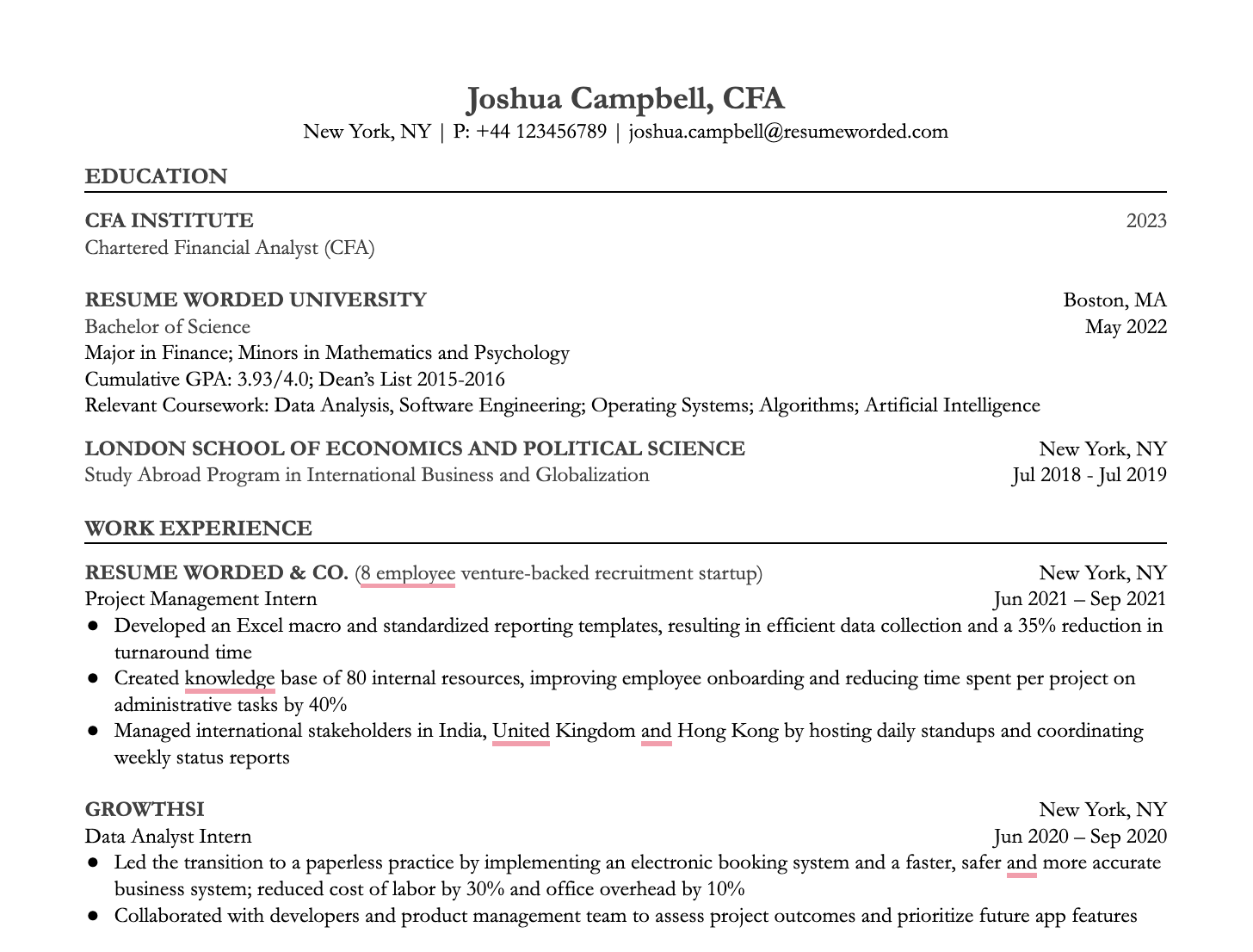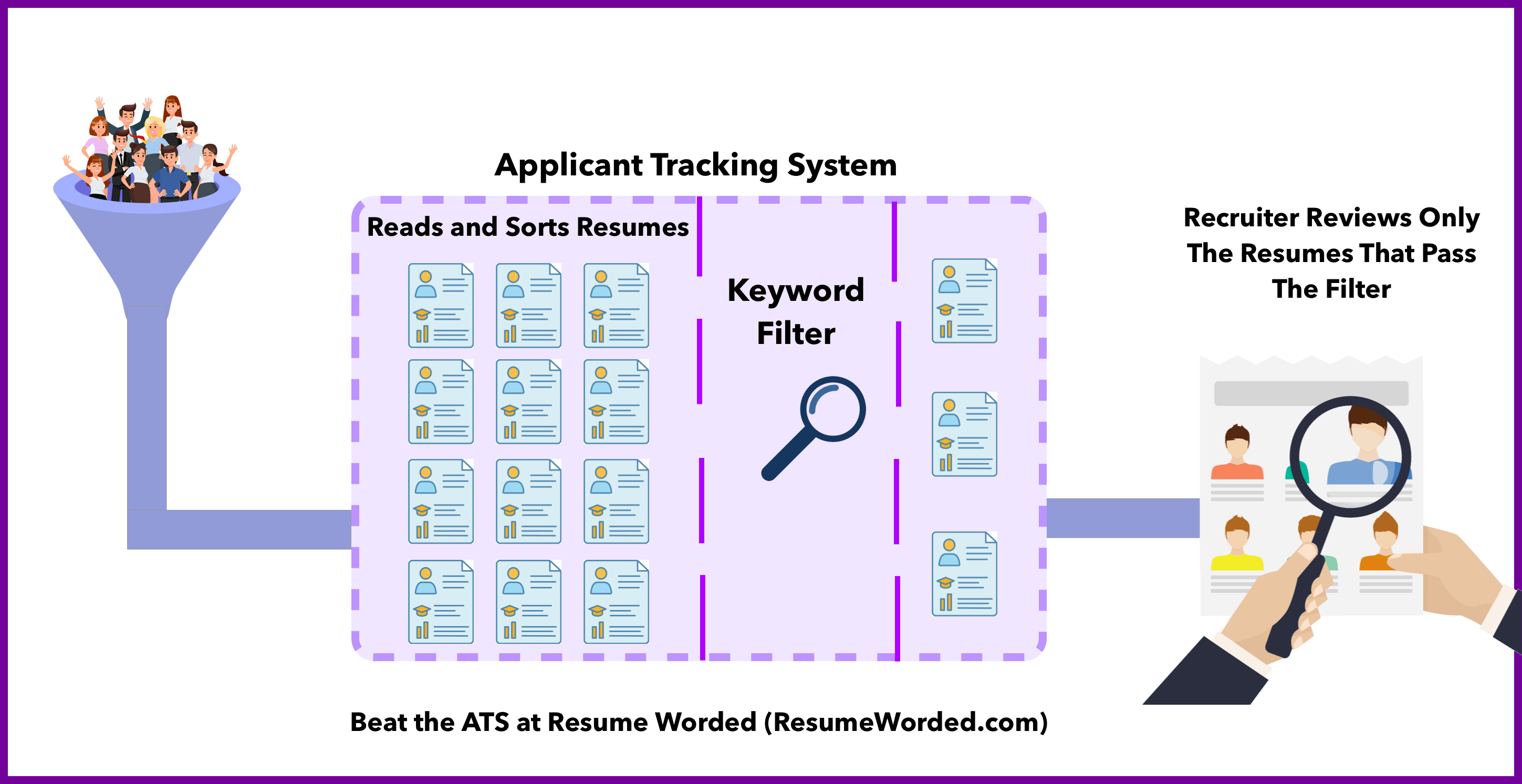You've burned the midnight oil, tackled all those challenging exams, and now you're a proud CFA® charterholder (or on the path to becoming one). Congratulations! This is a significant achievement, and you're eager to showcase it.
But, like many others, you might be scratching your head, wondering how to properly display it on your resume and LinkedIn.
Be forewarned, the CFA® Institute has outlined specific guidelines for adding your CFA® designation to your resume. If you don’t follow these guidelines, you may face disciplinary measures.
In this article, we’ll explore the dos and don'ts of adding your CFA® designation to your resume and LinkedIn to ensure compliance and that it shines in the brightest light possible.
How and where to display your CFA® designation on your resume
Active CFA® charterholders in good standing
If you are an active CFA® charterholder, there are two places to include this on your resume:
- Name: You can indicate your CFA® status on your resume by including the acronym CFA after your name (separated by a comma). For example, you could write “Joshua Campbell, CFA”
- Certifications or Education: You can (and should) also Include your charterholder status in the Certifications or Education section of your resume. You can write “CFA® charterholder, CFA Institute” (followed optionally by the date your charter was issued).

If you're unsure whether you've chosen the right section of your resume to include your CFA designation, upload your resume to the tool below. It will identify any mistakes and provide suggestions for improvements.
Lapsed CFA® charterholders
If your CFA® designation has expired, it is still worth indicating that you were once a charterholder in the Certifications section of your resume. Make sure you specify the dates that you held the designation, including the date of issue and date of expiry. For example:
Chartered Financial Analyst (CFA®), 20XX–20XX.
CFA® candidates
If you are currently working on getting your CFA®, indicate that you are currently enrolled in the CFA® Program in the Education section of your resume. If you are actively registered for an exam within the CFA® program, you can write:
CFA® Program candidate, CFA® Institute
If you are enrolled in the CFA® program, but not actively registered for an exam, you can write:
CFA® Program participant, CFA® Institute
You can also indicate the level that you most recently completed:
CFA® Program participant, CFA® Institute, Level 1 passed in 20XX
Ready to further enhance your resume's impact as a CFA® candidate or participant? Our Targeted Resume tool is designed to help you fine-tune your resume with the perfect keywords and phrases to attract potential employers in the finance industry.
You can also use the skills search tool below to get a list of keywords relevant to the job you're applying for.
How and where to display your CFA® designation on LinkedIn
Adding your CFA® designation to your LinkedIn profile not only demonstrates your expertise, but it also helps you stand out to potential employers or clients. Here's a step-by-step guide to correctly and professionally showcase your CFA® designation on LinkedIn, according to CFA® Institute Guidelines.
Name
If you are an active CFA® charterholder, the first (and easiest) place to add your CFA® designation on LinkedIn is at the end of your name. In your LinkedIn profile header, add "CFA" after your last name, separated by a comma.
For example,
Joshua Campbell, CFA
Licenses & Certifications
The next place to showcase your designation on LinkedIn is in the "Licenses & Certifications" section. If you've already earned your CFA® charter, follow these steps to add your designation details to your profile:
- Go to your LinkedIn profile and click on "Add Profile Section."
- From the options that appear, select "Recommended."
- Click on "Add License and Certifications" and enter the following information:
- Certification Name: "Chartered Financial Analyst (CFA) Charterholder"
- Issuing Organization: CFA Institute
- Issue Date (month/year): Select the month and year you received your charter.
- Expiration Date (month/year): If your membership has lapsed, indicate the month and year of expiration. Note that failure to update your expiration date can result in a violation of Standard VII(b) of the Code and Standards.
- Credential ID: Leave it blank.
- Credential URL: Insert your digital badge URL.
If your license has expired, here's how to update your profile to reflect the change in your membership status:
- Go to the "Licenses & Certifications" section of your LinkedIn profile and find your CFA® Charterholder designation.
- Under "Expiration Date (month/year)," select the month and year when your membership lapsed. Not indicating the expiration of your membership is considered a violation of Standard VII(b) of the CFA Institute's Code of Ethics and Standards of Professional Conduct.
- For the "Credential ID" field, leave it blank.
- In the "Credential URL" field, you can include the link to your digital badge if you have one.
FAQ
What will happen if I don’t follow the CFA® Institute guidelines for listing CFA® qualifications?
You would be in violation of the Code of Ethics and Standards of Professional Conduct. The CFA® Institute could then take several disciplinary measures, including revoking your right to use the CFA® designation, suspension of your membership, and more. Just stick to the above guidelines, and you’ll be good!
What are CFA® Program Digital Badges?
The CFA® Institute provides digital badges to candidates and charterholders that serve as a way to display their accomplishments in an online and verifiable format. There are three badges available:
- Level I passed
- Level II passed
- CFA® charterholders
Who hires the most CFA® charterholders, candidates, and participants?
Banks and financial firms are often looking to add new talent who hold, or are working towards their CFA®. Common roles for CFA® charterholders include:
- Research Analyst
- Wealth Management
- Portfolio Management
- Risk Management
- Private Banking
- Investment Banking










